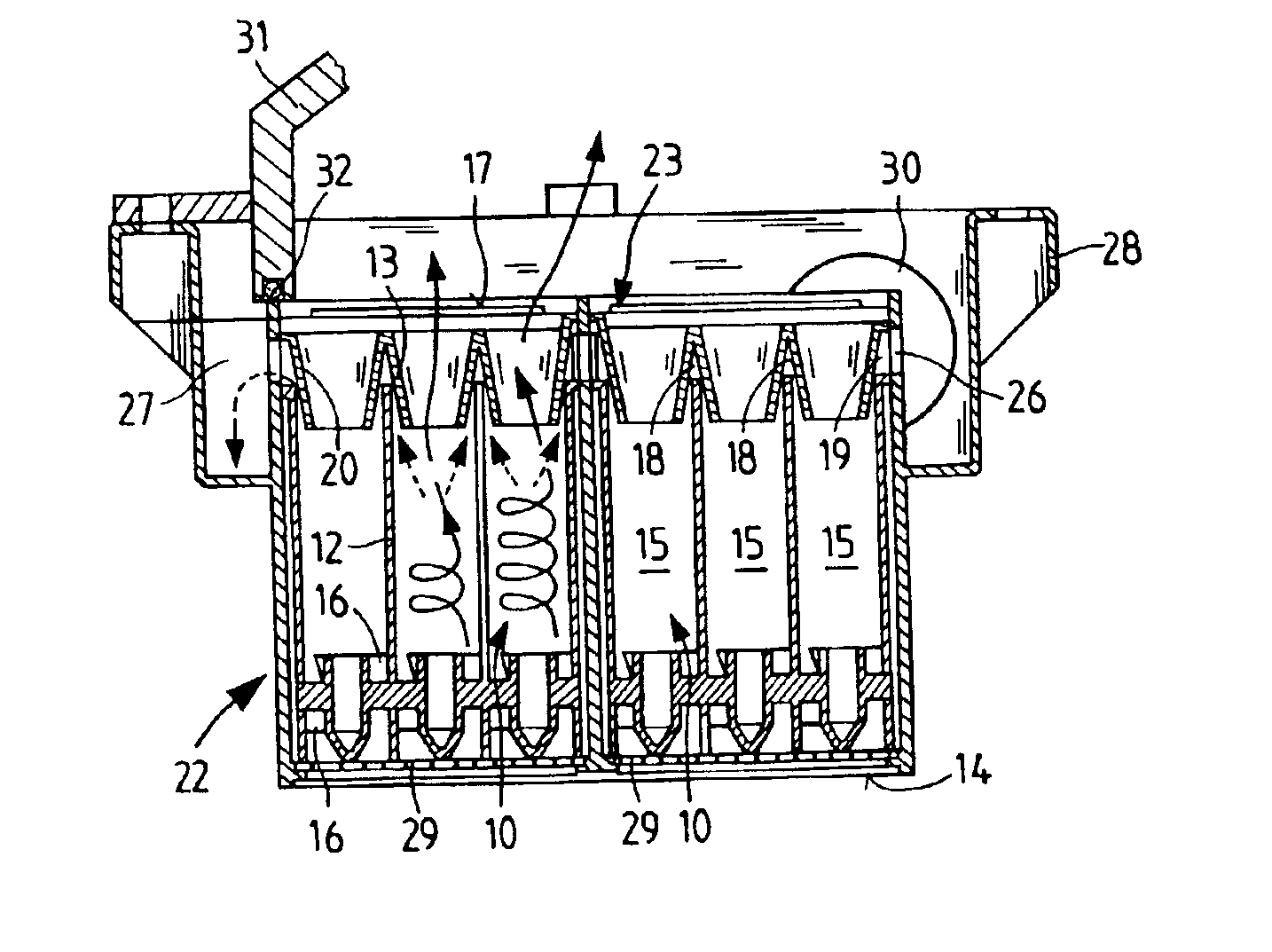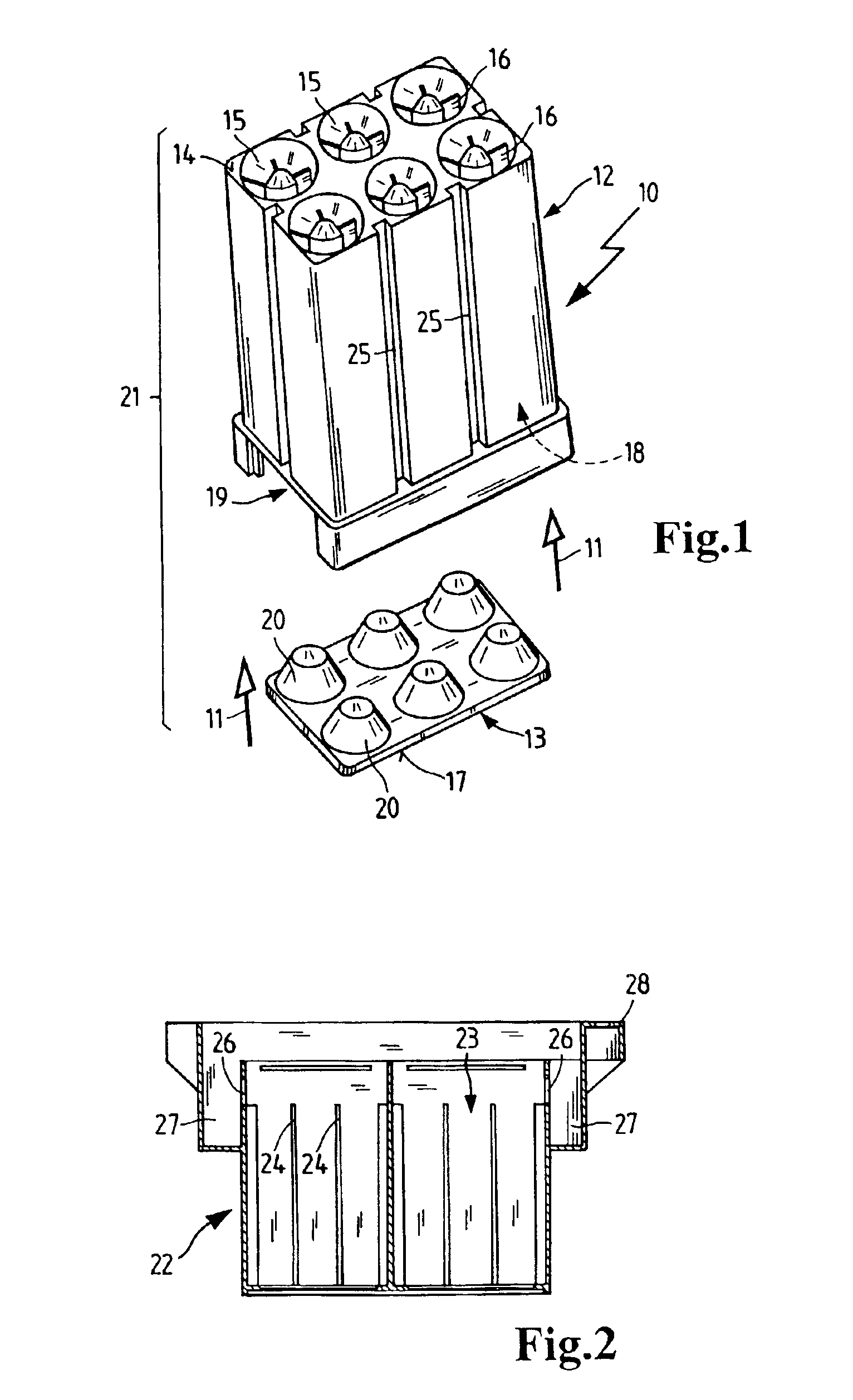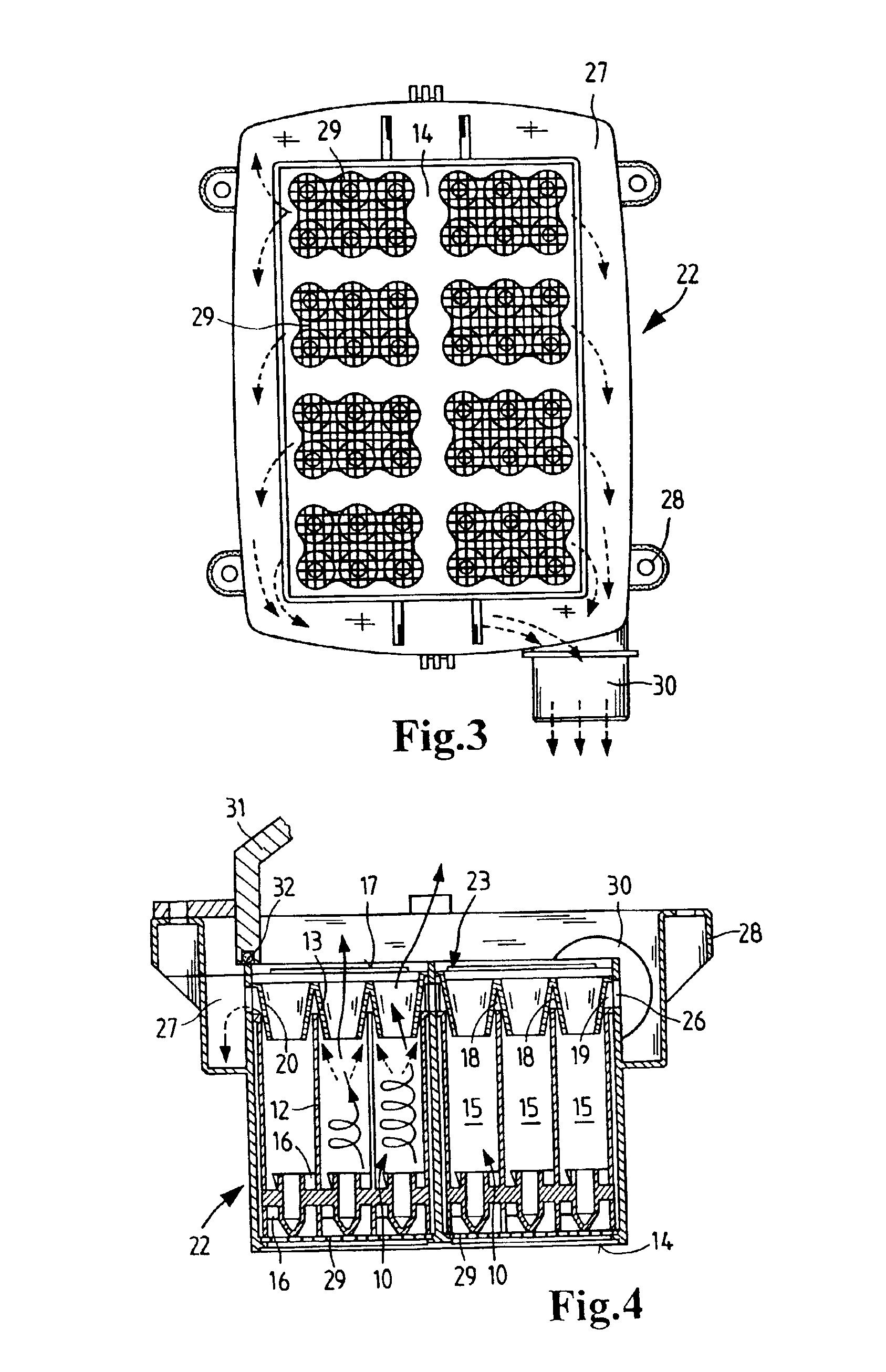Multicell cyclone and method for producing it
a multi-cell cyclone and cyclone technology, applied in the field of multi-cell cyclones, can solve the problems of clogging individual cyclone cells, negative separation effect, and inability to combine unlimited number of cyclone cells in a multi-cell, and achieve the effects of improving reliability of multi-cell cyclones, cost-effective production, and contributing to the economic efficiency of inventive multi-cell cyclones
- Summary
- Abstract
- Description
- Claims
- Application Information
AI Technical Summary
Benefits of technology
Problems solved by technology
Method used
Image
Examples
Embodiment Construction
[0029]FIG. 1 shows a module 10 prior to assembly in accordance with the arrows 11. This module comprises a base body 12 and an attachment body 13. The base body forms an intake 14, which is formed by the opening of cyclone cells 15 on the untreated side. In these openings, guide vanes 16 may be seen, which are integrally formed with base body 12 without undercuts. Thus, the part shown can be produced by injection molding using two mold halves. These mold halves can be joined in the direction of arrows 11 and separated again after the injection molding process. The same also applies to the attachment body 13.
[0030]Attachment body 13 forms an outlet side 17, which is simultaneously configured as a cover to seal off a collection chamber 18 (not visible in FIG. 1), which is formed by the base body. In the parting line that is thereby created, an opening 19 is formed for discharging the separated substances deposited in collection chamber 18. From cyclone cells 15 the separated substance...
PUM
| Property | Measurement | Unit |
|---|---|---|
| Fraction | aaaaa | aaaaa |
| Electrical resistance | aaaaa | aaaaa |
| Vacuum | aaaaa | aaaaa |
Abstract
Description
Claims
Application Information
 Login to View More
Login to View More - R&D
- Intellectual Property
- Life Sciences
- Materials
- Tech Scout
- Unparalleled Data Quality
- Higher Quality Content
- 60% Fewer Hallucinations
Browse by: Latest US Patents, China's latest patents, Technical Efficacy Thesaurus, Application Domain, Technology Topic, Popular Technical Reports.
© 2025 PatSnap. All rights reserved.Legal|Privacy policy|Modern Slavery Act Transparency Statement|Sitemap|About US| Contact US: help@patsnap.com



